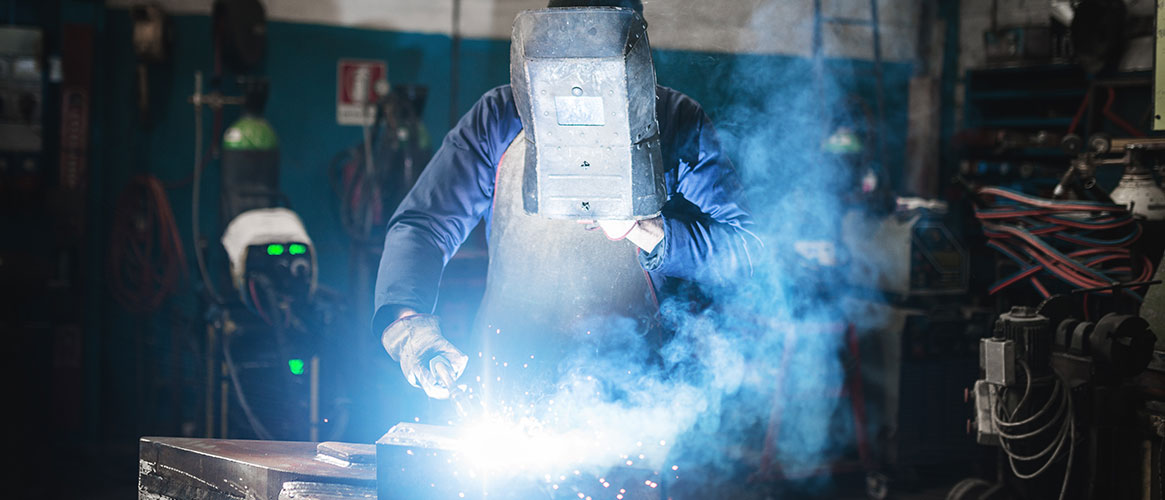Hot work may include spark and high heat producing job tasks such as grinding, welding, soldering, thermal or oxygen cutting or heating. Advanced planning and safe work procedures help prevent workplace fires caused by hot works activities. Get training on hot works tools and processes. Know how to assess the fire risk, prevent fire, extinguish fire, and activate emergency response. If you are a designated firewatch, get annual training on these procedures.
Wear the appropriate personal protective equipment for hot works, including tinted eye protection and a face shield. Wear fire-retardant clothing and a welding vest and gloves that can protect you from heat and sparks.
Whenever possible, hot works activities should take place in designated areas designed to accommodate sparks and high heat safely. Hot work areas should be labeled with warning signs. They should be isolated from flammable and combustible materials and protected with welding and warning screens that limit access. They need a solid, flame-proof floor with no cracks or openings and adequate ventilation.
Hot work may be required in different areas inside and outside buildings, where extra precautions are needed to prevent fires. A hot work permit is required for onsite work. The permit identifies one person in charge and provides a safety checklist before work begins.
The hot work permit requester surveys the worksite, tools, and materials before work begins. The work area needs to be safe for an ignition source with all flammable vapors cleared out. Work in a confined space requires an additional permit.
Combustible materials need to be moved away from the work area, or shielded and protected from the hot work. Any floor cracks or openings, and wall or ceiling openings within 35 feet of the hot work need to be covered with flameproof shields, or protected by a fire watch. Warning signs, barriers, and welding screens are required.
A fire extinguisher must be available where the hot work is done. Emergency procedures and exit routes should be reviewed. Hot work should not be done in buildings with disabled sprinkler fire suppression systems unless the work is required on the system itself. Workers can temporarily shield sprinkler heads from hot work if they may be triggered by the flame or heat.
Firewatchers watch for fires during hot work operations and at least 30 minutes afterward, or until the fire risk is gone. Firewatchers must be assigned to the job if there are combustibles or wall/floor openings within 35 feet of the hot work area, or near metal building parts that may ignite by conduction or radiation. If it’s necessary to watch multiple areas for fire risks, additional firewatchers should be posted.
Firewatchers should extinguish fires immediately if it is safe to do so. They must stop work when fire risk is too high, or evacuate the building if a fire occurs. Firewatchers should be familiar with the building safety systems, emergency contacts, and rescue procedures. Firewatchers may be assigned other duties if they don’t interfere with fire monitoring.
For specific regulations, please see the following Articles and Sections from the Title 8 General Industry Safety Orders:
Article 80. Purpose and Definitions (Sections 4794 – 4795)
Article 81. General (Sections 4797 – 4799)
Article 82. Stationary Automatic Acetylene Generators (Sections 4803 – 4813)
Article 83. Portable Automatic Acetylene Generators (Sections 4815 – 4816)
Article 87. Operating Procedure (Section 4845)
Article 88. Fire Prevention in Welding and Cutting Operations (Sections 4846 – 4848)
Article 90. Electric Welding, Cutting and Heating (Sections 4850 – 4853)
